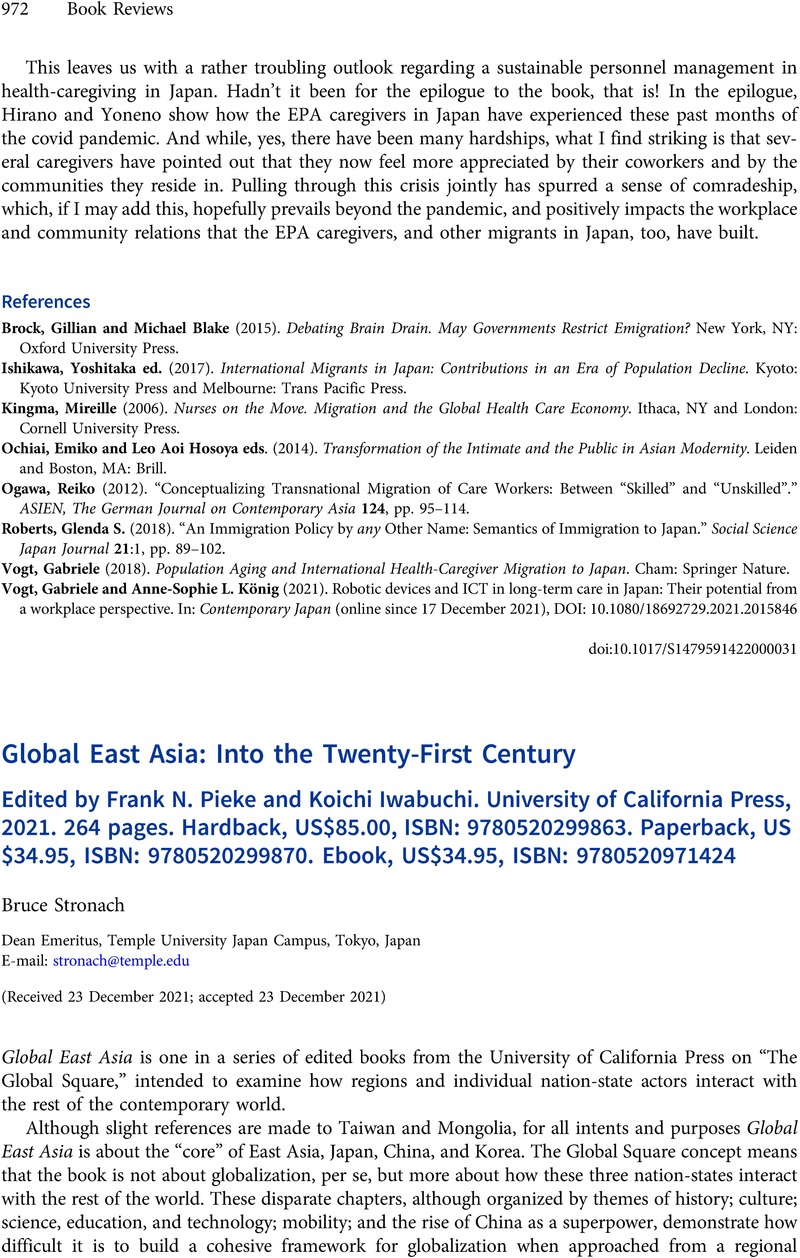No CrossRef data available.
Article contents
Global East Asia: Into the Twenty-First Century Edited by Frank N. Pieke and Koichi Iwabuchi. University of California Press, 2021. 264 pages. Hardback, US$85.00, ISBN: 9780520299863. Paperback, US$34.95, ISBN: 9780520299870. Ebook, US$34.95, ISBN: 9780520971424
Review products
Global East Asia: Into the Twenty-First Century Edited by Frank N. Pieke and Koichi Iwabuchi. University of California Press, 2021. 264 pages. Hardback, US$85.00, ISBN: 9780520299863. Paperback, US$34.95, ISBN: 9780520299870. Ebook, US$34.95, ISBN: 9780520971424
Published online by Cambridge University Press: 31 January 2022
Abstract
An abstract is not available for this content so a preview has been provided. Please use the Get access link above for information on how to access this content.

- Type
- Book Review
- Information
- Copyright
- Copyright © The Author(s), 2022. Published by Cambridge University Press



